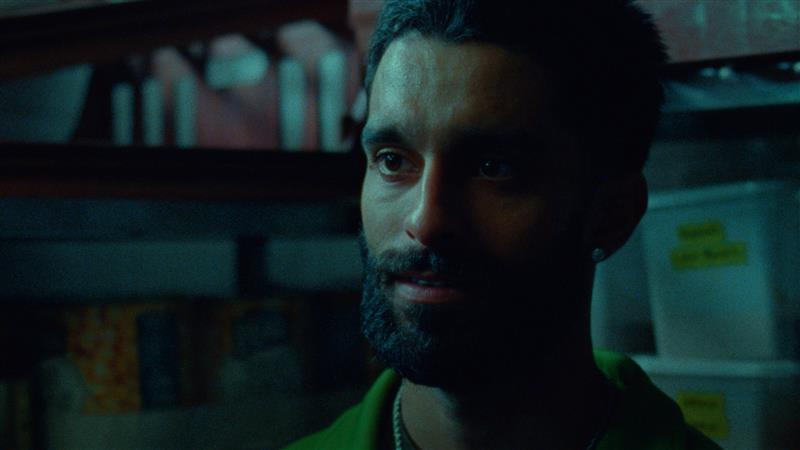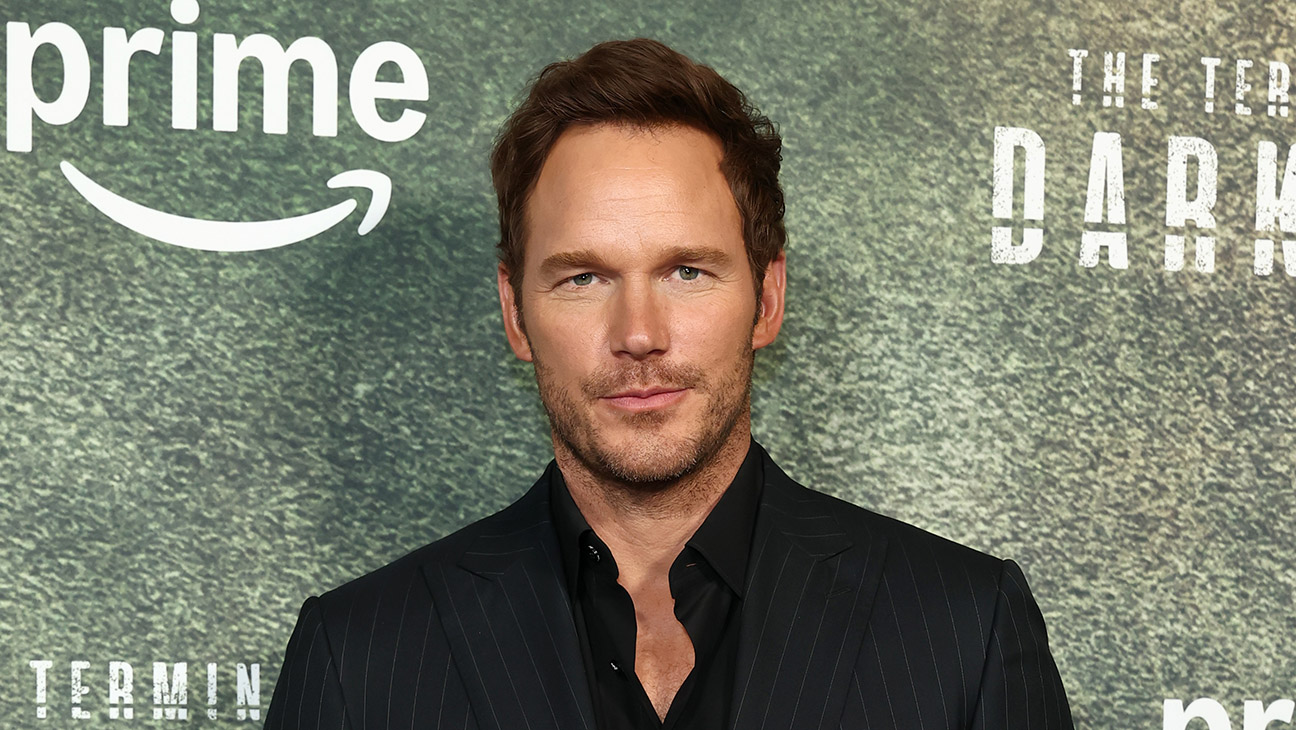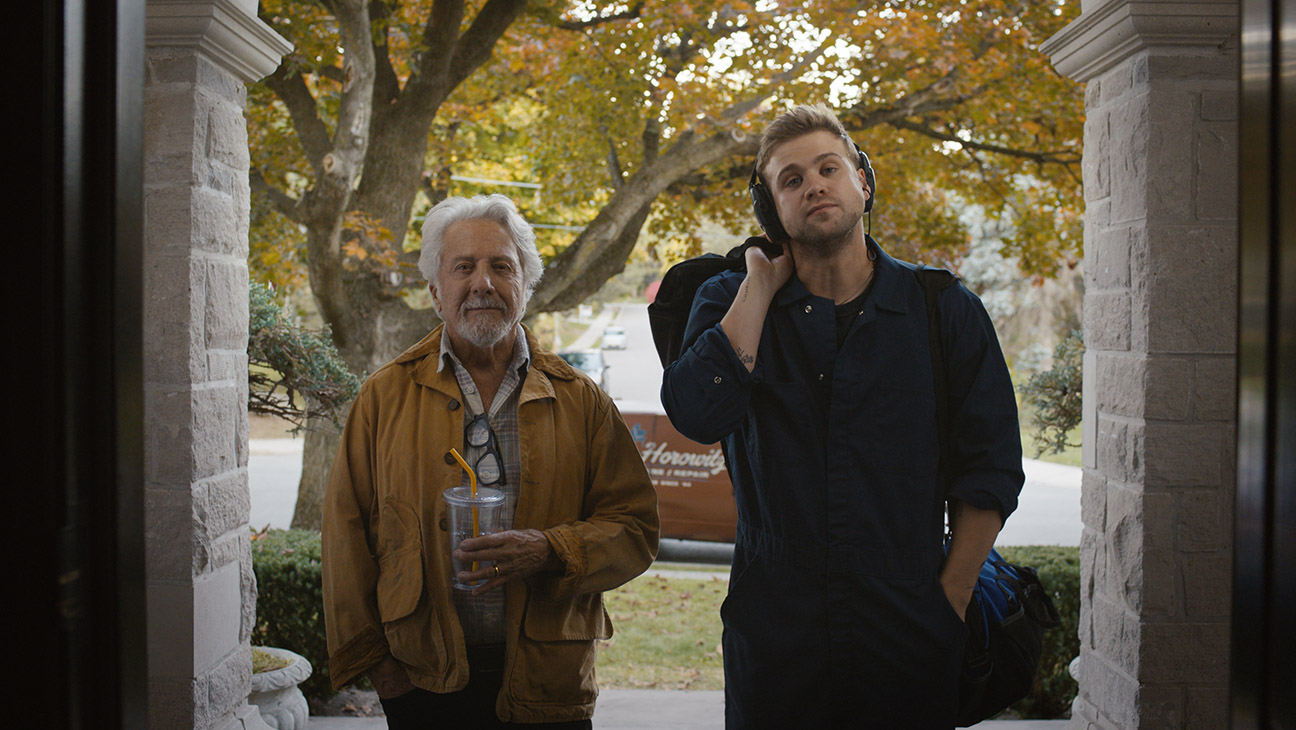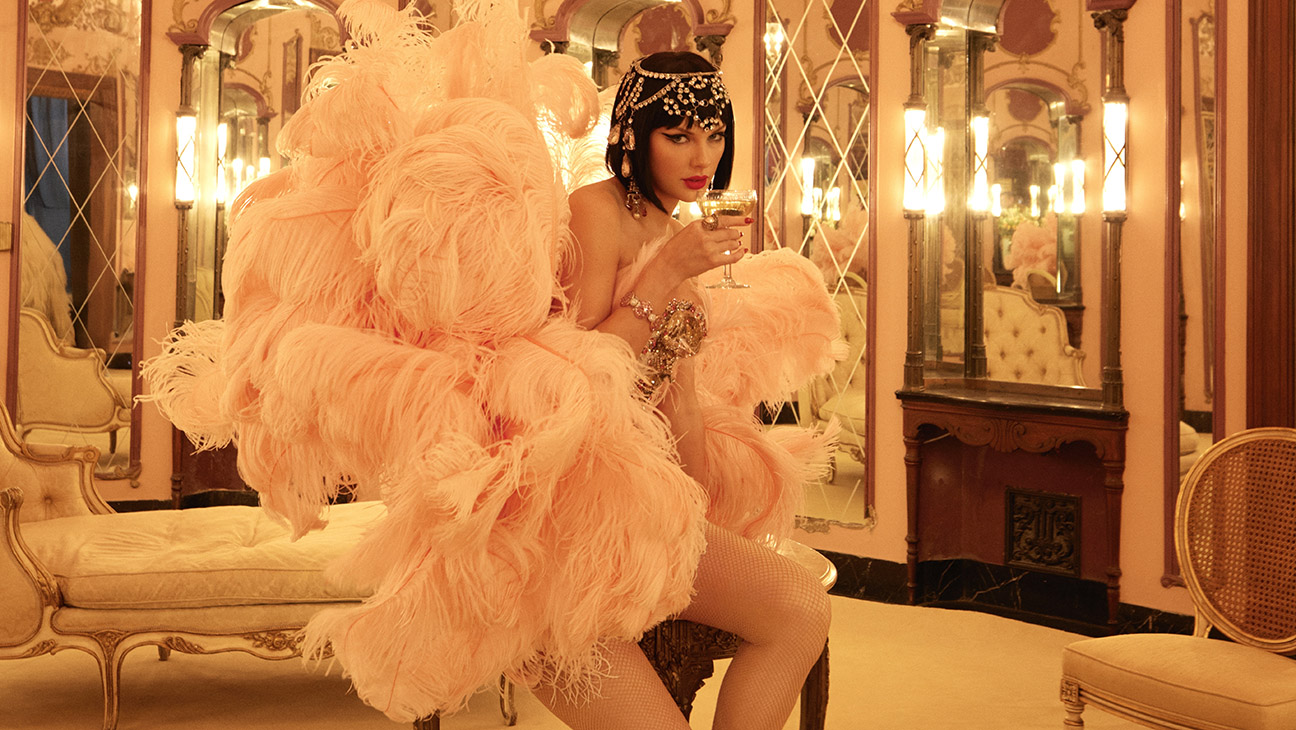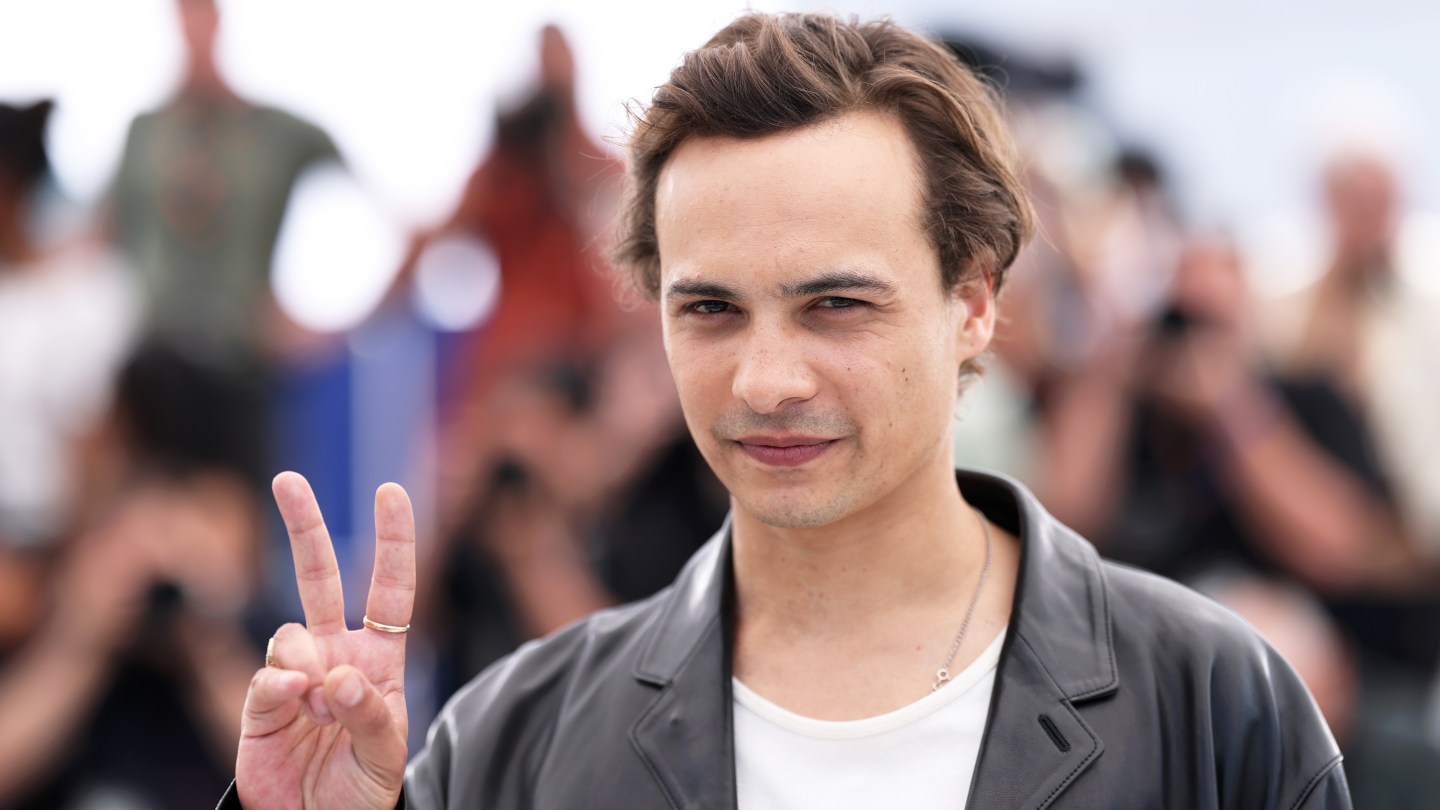Who are you? And what’s going on? Those are just a couple of questions that may be going through your mind when watching Magid / Zafar (معجد / ظفیر), a short directed by Luís Hindman, who co-wrote it with Sufiyaan Salam, which world premiered at the 69th edition of the BFI London Film Festival (LFF) on Wednesday night.
“Two childhood friends confront their diverging futures amidst the heat and chaos of a British-Pakistani takeaway,” reads the brief synopsis for the English- and Urdu-language film, which screens as part of a series of shorts under the banner “Roots and Branches” at the LFF.
Supported and funded by Future Takes, a joint initiative from the BFI and Channel 4’s Film4, whose creative and production executives support each film through its entire lifecycle, the short was produced by Aidan Robert Brooks. It stars Eben Figueiredo (Dope Girls, The Serial Killer’s Wife, Picture This) as Magid and Gurjeet Singh (Ackley Bridge, Mrs. Sidhu Investigates, Hotel Portofino) as Zafar.
Magid / Zafar, one of four Film4 shorts at the LFF, is available free to watch here on the BFI Player until Oct. 26.
Hindman took time to chat with THR about the film, the representation of South Asian characters on screens, and what’s next for him.
Where did the idea and the inspiration for Magid / Zafar come from?
I’d just finished a music video project for the artist Joesef called Permanent Damage. It was a series of music videos that was semi-narrative and dealt with similar themes and a similar visual world as this film. I felt I sort of crystallized on a style, at least for that, and coming to the end of that, I knew the next thing I wanted to do was a narrative short. I always wanted to make films. And music videos were really a great way to hone the craft and practice.
So, I wanted to do a narrative short, and a big thing for me was wanting to do something in a South Asian context. I’m half South Asian, and my co-writer is as well. The earliest seed of the idea was wanting to do something around South Asian masculinity. And we were drawn to who the character is in the first half of the film, initially. We know people like that. And it was an interesting character for us to hinge a film on. He’s this sort of brash British bad boy who’s loud-mouthed. And the more we talked about that, and the more I was coming off of this music video project, which deals with similar themes emotionally, the more the two worlds collided.
There is more to Magid as a character, though…
Yes. I was like: What if we took this loud, brash character, and throughout the course of the film presented him as one thing, and by the end revealed that to be sort of a performance. So yeah, it became about that. And the earliest idea really was that trajectory – what you present the audience with at first, and where it ends up.
I got these South Asian takeout restaurant version of The Bear vibes. The music is such a key part of the whole experience you take us through and adds this whole rhythm. Can you maybe talk a little bit about how you thought about the music as part of the whole experience?
The music was thought about pretty early on. It started with a couple of the tracks written into the script, but more like needle drops, like tracks that I knew I wanted to be in there, for example, the opening track. The final song was a pre-existing composition from a composer friend of mine, which hadn’t been used for a film yet, and I really wanted to use it. At one point, we talked about her writing something from scratch, but this was just a great track that my editor and I already loved, so we wrote that in.
Even before the shoot, I basically had all the tracks that were going to be in the film, maybe minus a couple. And one of the first things I did, which proved to be quite a good way of explaining what the film was going to be to everyone, was I pre-edited the first two minutes of the film using reference footage and storyboards, but with the sound edit exactly how it is in the final film. So, it had the music cues and it had sound effects. That was useful to explain it to everyone else, but also for me to feel my way through how the film would change with the music.
How much of a role did music play from there?
I had rehearsals for the film, and in rehearsal, I’d play the music that would be in the background, and we did a rehearsal run-through from beginning to end, where I changed the music when it changes in the film, so the actors knew the sonic environment the words would be fitting into.
And then when we got into the edit, it became completely crucial for each scene. So we actually wouldn’t really edit a scene before we had the music in place, which I think is somewhat unconventional. Usually, music comes on at the end, but we edited everything to the music for that little section, because it was all about the momentum of that scene, and also how it led into the next thing.
There are different types of music in the film? Can you explain that a bit?
Something I was really interested in was having this mix of old and new in the music, which was sort of motivated by a radio moment at the beginning of the film. We’ve got contemporary Asian hip hop, and then it kind of switches to traditional qawwali Pakistani music, and then we are riding both of those ends of the spectrum throughout. What that allowed me to do creatively in the film was this: The contemporary music kind of gives you that more soundtracky vibe that’s maybe like from The Bear and Scorsese – that type of use of soundtrack. And then when we go into the traditional music, it secretly becomes a score, because it’s mostly drums and instrumentation. As a director and in the edit, that gives you full control in terms of trying to pull the audience through it, because you’ve just got all these different buttons you can press in terms of the range of the music.
Where and how did you find the actors?
The unifying thread is that they’re all actors I’ve loved from the U.K. theater scene. Some have done a couple of screen roles, but all are actors I really love from the theater who I hadn’t seen enough on screen or who have not been able to do on screen what I’ve seen them do in theater. Very, very early on, I had those names, and luckily, they all wanted to do it.
I knew that being rooted in a theater background would just be naturally beneficial to this, because it is all word-led. I think they make it look easy when you watch it. It just hopefully feels natural, and they’re just having a conversation, but it requires, as an actor, really strong control of vocal rhythm and control over language. And they just have a different ability to master that from having been in theater and having been able to sustain a piece of work beginning to end.
More specifically, in terms of South Asian casting on screen, there’s been a particular flavor of that. There are faces you’re sort of used to seeing, or faces you’re used to seeing paired with a certain stereotype or archetype. And I really wanted to react against that and just cast what felt real to me and cast actors who I felt are very three-dimensional, which is key, especially in terms of the two leads. The film necessitated casting very three-dimensional actors who are complex.
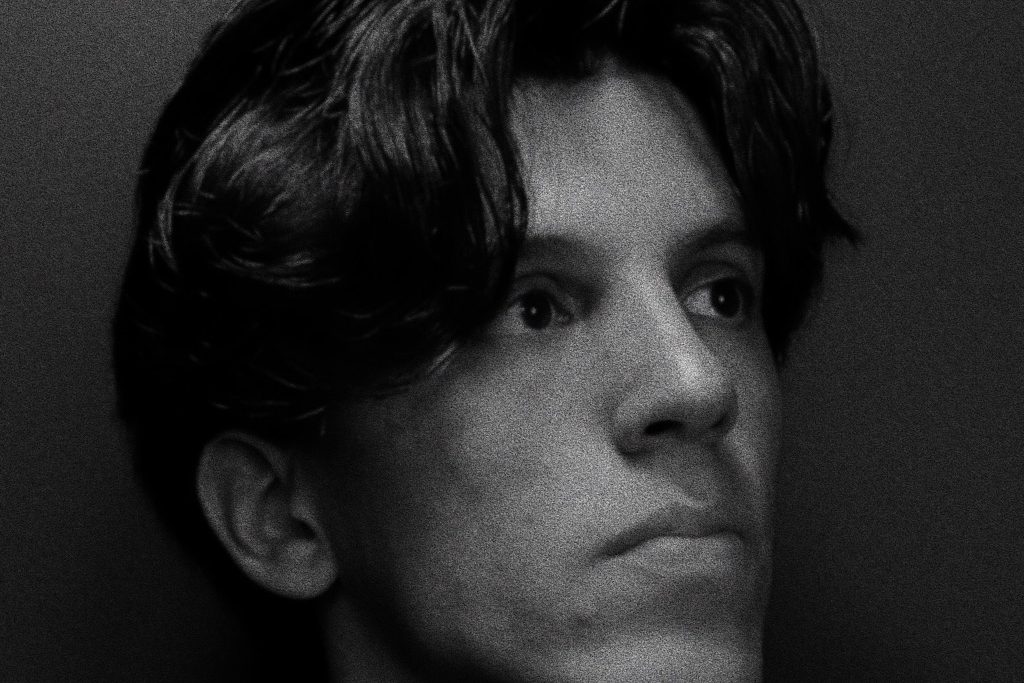
You mentioned South Asian representation on film screens. Could you expand on that?
It was a loose reference, but something I just had in my head when I was thinking about the faces that I wanted to put into the film, especially the leads. I really just wanted to cast faces or people that I could see in a Xavier Dolan movie or a Claire Denis film. I was really thinking about that sort of legacy in terms of how that type of young man on screen is presented. To me, those filmmakers do it in a very three-dimensional way.
After seeing the film, I wondered: Did they shoot this all in one take? What was the shooting process like?
The final three minutes of the film are one scene. I had rehearsal, and when we did the first table read just with the two lead actors, that end scene already was sounding good and very real. We’d initially set aside a whole day just to rehearse that scene. But after hearing the table read, I didn’t want to mess that up. As a director, when you are confronted with something like that, you just think not to fuck with it.
We rehearsed the first half of the film very heavily because it needed that. But for the second half, I was like: Let’s not mess up what already sounds good. I wanted the uncertainties that already exist in that final scene to remain uncertain on the day of filming. I didn’t want the actors to have figured out how that meant to move, how long it was going to take. I didn’t want to have any of that pre-decided. So when it came to the day of the shoot, they hadn’t rehearsed the final scene since that one dry table read.
Anything else you can share about that final scene?
I decided to start on a close-up of Majid, the lead character. So, if they’re doing the scene the first time, let’s not waste this first time on a wide shot, which I won’t use. And that take was just very memorable. As a writer and director, you know where the scene is meant to go, but you’re seeing an actor and character figure that out from one moment to the next. There was this real feeling when I was watching it, like not knowing what was going to happen next. I didn’t know when he was going to say the next line, and I didn’t know how they were going to bridge one moment to the next, because they were figuring that out in real time. So it meant that the first take was just undeniably real. The whole scene from Majid’s side is take one.
And in terms of the unbroken element of it: From the last line to the very end of the film, two to three minutes, that’s just one shot. We decided not to cut back to the reverse shot, but just let that whole moment play out as it did on the day in real time. I didn’t give the actors any requirements in terms of how long that had to take, how long it had to last, how quickly it had to happen. So this was a space that was completely open. It was really about preserving the moment and just presenting it as real as possible.
Do you know what you are doing next and how much can you share about that?
The Magid / Zafar team has a feature in development with Film4 and the BFI.

